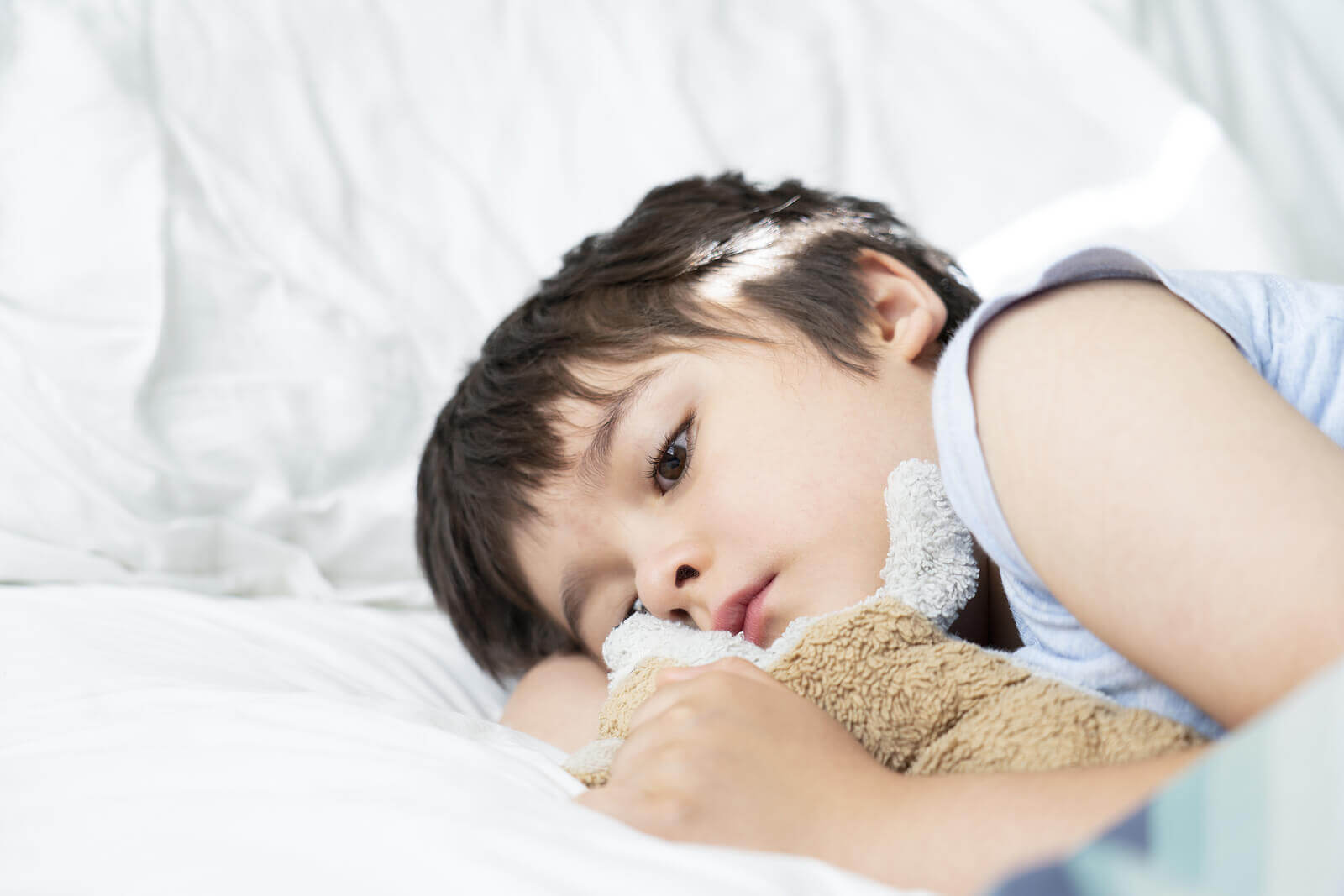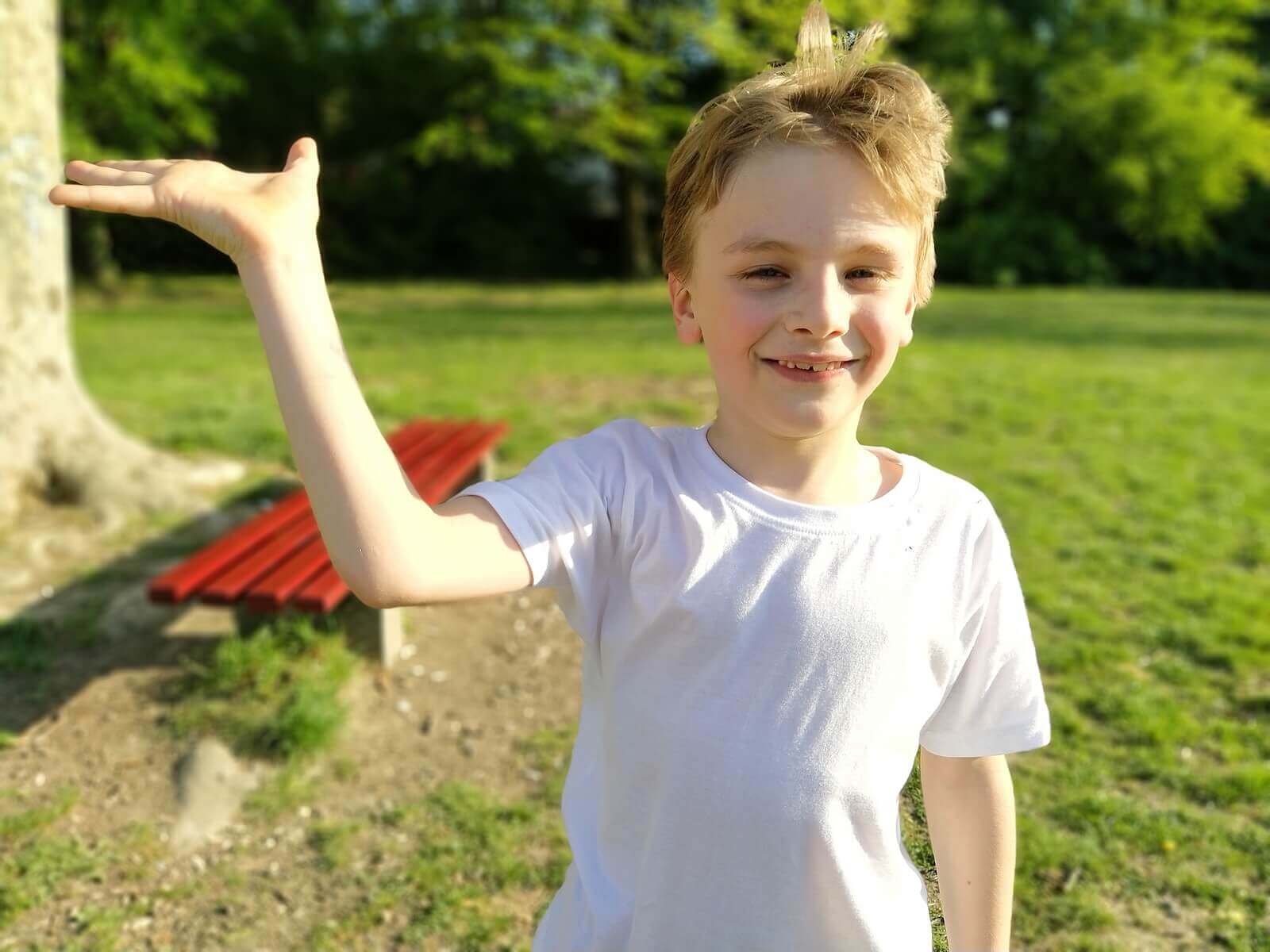The 7-Year-Old Crisis: What Does It Involve?

The 7-year-old crisis is simply a phase of development in which children begin to build a personality and identity of their own. At this age, children’s brains undergo major changes that affect the behaviors they adopt.
What do we mean by this? What kind of behaviors are characteristic of the 7-year crisis? How can we best deal with it?
We’ll answer these questions in the following lines. If you have a child who is entering this age, you’ll surely be interested in what we have to say.
The 7-year-old crisis in children
A child’s brain is constantly growing and maturing. In fact, at the age of 7, it reaches, approximately, the size of an adult’s brain. A study published in Centre Londres 94 points this out.

In addition, when this age comes, the myelization process reaches completion. At the same time, important changes take place on a physical, psychological and social level. That is to say, at 7 years old, little ones become older and begin an intense and long road towards puberty.
Therefore, we can expect certain alterations in our children’s behavior. Just the same, there’s nothing to worry about. Remember, it’s a normal part of child development commonly known as the 7-year-old crisis.
When they turn 7, children need to experience the world on their own. As a result, they develop a greater degree of autonomy and independence. In addition, they begin to be aware of their own self, specifically:
- The real me: These are the characteristics that one attributes to oneself. It’s the answer to the question “Who am I?” or “What am I like?
- Ideal self: This refers to the characteristics one would like to have. It’s the answer to the question “Who would I like to be?” or “How do I think I should be?”
This makes them want to strengthen their own personality and identity in order to differentiate themselves from other people. It involves a very complex process of internal searching and reflection. This process, combined with a lack of maturity and impulse control, causes the appearance of rebellious and defiant behaviors in children.
Characteristics of this phase of development
As we’ve already seen, we can consider the 7-year-old crisis to be a phase of personality reaffirmation. During this complicated stage, it’s common to observe the following behaviors, which can occur to a greater or lesser degree in children:
- Denial or defiance towards authority (parents, teachers, etc.).
- Disobedience of the rules.
- Dominant attitudes.
- Sudden changes in mood, from laughing to crying, and vice versa.
- Imposition of one’s will on others.
- Frequent anger and temper tantrums.
- Capricious behavior.
- Signs of rebelliousness when things don’t go as they want.
- Automatic negative response to everything that is proposed to them.
- Restless and even hyperactive behaviors, being in continuous movement.
It seems hopeless, doesn’t it? Luckily, in most cases, all these inappropriate behaviors die down over time. Soon, little ones become mature enough and fully develop their executive functions.
In addition, you can control and modify such attitudes and behaviors with the implementation of a series of educational and pedagogical guidelines.

How to face the 7-year-old crisis?
Do you have a child who’s in the middle of a 7-year-old crisis or is approaching it? The first thing you should know is that you must arm yourself with patience – this will be a difficult stage for both of you.
Here are some recommendations to face this stage of childhood in the best possible way:
- Establish a series of rules that must be followed at home and try to explain them clearly.
- Avoid constant and disproportionate punishments, because these will serve little or nothing. They’ll only make both you and your child more angry and lose control.
- Reinforce in a positive way (with flattery, gestures, hugs, etc.) your child’s positive behaviors.
- Don’t pay attention to your child’s tantrums or aggressive behavior. Rather, wait until they calm down to talk to them and help them reflect on their actions.
- Encourage your child to practice a sport that will allow them to burn off their energy.
- Share quality time with your child.
And, above all, remember: “There are no difficult children; what’s difficult is being a child in a world of tired, busy people without patience and in a hurry.”
The 7-year-old crisis is simply a phase of development in which children begin to build a personality and identity of their own. At this age, children’s brains undergo major changes that affect the behaviors they adopt.
What do we mean by this? What kind of behaviors are characteristic of the 7-year crisis? How can we best deal with it?
We’ll answer these questions in the following lines. If you have a child who is entering this age, you’ll surely be interested in what we have to say.
The 7-year-old crisis in children
A child’s brain is constantly growing and maturing. In fact, at the age of 7, it reaches, approximately, the size of an adult’s brain. A study published in Centre Londres 94 points this out.

In addition, when this age comes, the myelization process reaches completion. At the same time, important changes take place on a physical, psychological and social level. That is to say, at 7 years old, little ones become older and begin an intense and long road towards puberty.
Therefore, we can expect certain alterations in our children’s behavior. Just the same, there’s nothing to worry about. Remember, it’s a normal part of child development commonly known as the 7-year-old crisis.
When they turn 7, children need to experience the world on their own. As a result, they develop a greater degree of autonomy and independence. In addition, they begin to be aware of their own self, specifically:
- The real me: These are the characteristics that one attributes to oneself. It’s the answer to the question “Who am I?” or “What am I like?
- Ideal self: This refers to the characteristics one would like to have. It’s the answer to the question “Who would I like to be?” or “How do I think I should be?”
This makes them want to strengthen their own personality and identity in order to differentiate themselves from other people. It involves a very complex process of internal searching and reflection. This process, combined with a lack of maturity and impulse control, causes the appearance of rebellious and defiant behaviors in children.
Characteristics of this phase of development
As we’ve already seen, we can consider the 7-year-old crisis to be a phase of personality reaffirmation. During this complicated stage, it’s common to observe the following behaviors, which can occur to a greater or lesser degree in children:
- Denial or defiance towards authority (parents, teachers, etc.).
- Disobedience of the rules.
- Dominant attitudes.
- Sudden changes in mood, from laughing to crying, and vice versa.
- Imposition of one’s will on others.
- Frequent anger and temper tantrums.
- Capricious behavior.
- Signs of rebelliousness when things don’t go as they want.
- Automatic negative response to everything that is proposed to them.
- Restless and even hyperactive behaviors, being in continuous movement.
It seems hopeless, doesn’t it? Luckily, in most cases, all these inappropriate behaviors die down over time. Soon, little ones become mature enough and fully develop their executive functions.
In addition, you can control and modify such attitudes and behaviors with the implementation of a series of educational and pedagogical guidelines.

How to face the 7-year-old crisis?
Do you have a child who’s in the middle of a 7-year-old crisis or is approaching it? The first thing you should know is that you must arm yourself with patience – this will be a difficult stage for both of you.
Here are some recommendations to face this stage of childhood in the best possible way:
- Establish a series of rules that must be followed at home and try to explain them clearly.
- Avoid constant and disproportionate punishments, because these will serve little or nothing. They’ll only make both you and your child more angry and lose control.
- Reinforce in a positive way (with flattery, gestures, hugs, etc.) your child’s positive behaviors.
- Don’t pay attention to your child’s tantrums or aggressive behavior. Rather, wait until they calm down to talk to them and help them reflect on their actions.
- Encourage your child to practice a sport that will allow them to burn off their energy.
- Share quality time with your child.
And, above all, remember: “There are no difficult children; what’s difficult is being a child in a world of tired, busy people without patience and in a hurry.”
All cited sources were thoroughly reviewed by our team to ensure their quality, reliability, currency, and validity. The bibliography of this article was considered reliable and of academic or scientific accuracy.
- Baeza E., Tomás J., Molina M., Raheb C., Vila A. (s.f.). Fases del desarrollo. Barcelona: Centre Londres 94. http://repositorio.uigv.edu.pe/bitstream/handle/20.500.11818/4163/TRABSUFICIENCIA_BARRAGAN_LESLY.pdf?sequence=1&isAllowed=y
- Bergeron, M. y Mainar, G. G. (1974). El desarrollo psicológico del niño:(desde la primera edad hasta la adolescencia). Morata.
This text is provided for informational purposes only and does not replace consultation with a professional. If in doubt, consult your specialist.








